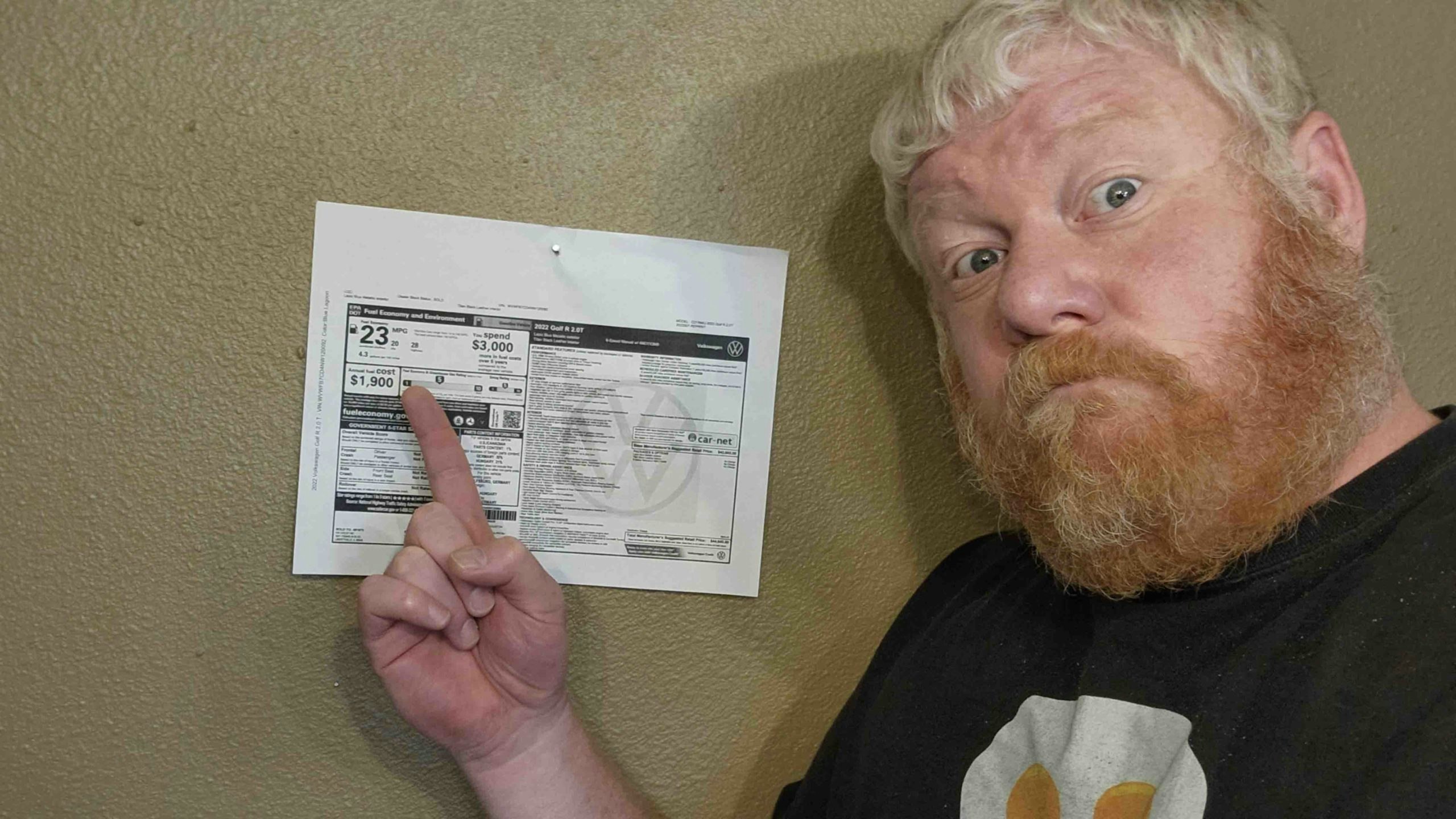A while back, I wrote about gas saving tips, debunking some of the common misconceptions and validating a few others. Now let’s look at some other automotive myths and see if they have any footing in reality.
Many common beliefs about cars, we’ll learn, only apply to vehicles from the 1990s and earlier. Things have changed in 30 or so years.
Clean Your Oil Filter
This one is hilarious. There’s this persistent myth out there that you should “flush” or clean your oil filter. Including wiping off the O-ring before installing a new one. To start with, the only filter you can “flush and clean” to re-use is what’s called a separator and it’s only found on a few specific types of machinery. None of which are vehicles. Even then they’re extremely rare.
Anyway, the filter on your car or truck should be replaced every oil change. And it doesn’t need to be “cleaned” before being mounted. Some vehicles (mostly diesel engines) may require that the filter be pre-filled with new oil before being mounted. And it’s usually a good idea to wipe some oil around the rubber gasket as well.
Car Batteries Last About 5 Years
This is a fun one. I treat batteries and other maintenance items the same way I do the car itself. If the warranty says five years, then it should last five years. Like most vehicle warranties, though, the warranty for an accessory battery is usually three years or less. With replacement batteries pricing into the hundreds of dollars, it’s good to know how often this will have to be done.
On top of that, Wyoming’s tough weather can mean even less lifespan unless one opts for a better battery. I recommend spending the extra for a battery with a high cold cranking amps (CCA) rating.
And for those about to comment: no, EV batteries are not like your 12-volt lead-acid battery. EV batteries are warranted, by law, for 8-10 years and are of a completely different design than your “don’t drink the contents”-labeled accessory battery.
Setting the Car’s Battery On Concrete Will Drain It
Another “used to be true, but isn’t now” myth. Thirty years ago, this was mostly true. Most batteries would “ground” if placed straight on concrete without some kind of buffer. The process wasn’t fast, but it could happen.
Today, car accessory (lead-acid) batteries are heavier because they require more casing to keep the dangerous chemicals intact. Laws have changed to require more safety around these batteries. And so it’s far less likely that your battery will drain itself while sitting on concrete. It’s more likely to drain due to the environment around it. After a few weeks, anyway.
Cars Are Bulletproof
We get to thank Hollywood for this one. According to the movies, bullets ping off of car bodies and penetrate trunks (but not the back seats). Especially automatic weapons fire.
The reality is that nearly every kind of bullet, including the lowly .22LR, can penetrate most car bodies today. Even the Cybertruck, shown off as “bulletproof” by Elon Musk, isn’t actually bulletproof. The fat .45 ACP rounds used from the Thompson fired at the truck were subsonic (low powder, low velocity) rounds. Chances are, a 1980s Honda Civic could also stop those bullets.
That’s why police and others trained in urban conflict will go behind the wheels, not the body of the car, while in a firefight. The movies love showing cops pulling up and using their door as “cover” in a gun battle. In real life, police are trained to put as much of the car between them and the bullets as possible. Preferably behind the steel or aluminum wheels and the engine block.
Cars Explode When You Shoot the Gas Tank
This one is great. Hollywood loves blowing vehicles up. Like the old “here’s a ramp hidden behind a bush” of 1980s television, this trope also won’t go away. In real life, shooting the gas tank (if you can actually hit it) isn’t likely to cause fire or explosion. Unless you’re using tracer rounds. And even then, it’s still hit-and-miss, as it were.
Stop-Start Systems Are Hard On Starters and Use More Gas
This is a persistent myth because, 20 years ago, it was right. If you took a 2000 Toyota Corolla and added the electronics to make it stop the engine at the stop light and then start it back up when your foot comes off the brakes, it would soon have a dead battery, bad fuel economy, and a broken starter motor.
Almost every vehicle today has a stop-start system in it. Modern systems rely on the properties of fuel injection and more robust starter units to make this an improvement. Cars that have these systems have high-pressure fuel injection that retains the pressurized lines so long as the car is “running” (meaning the key is “on”). Thus no extra fuel is used to inject for a restart. With compression in the cylinders in that part of the cycle retained and with fuel ready to inject in those about to commit combustion, there’s no extra fuel lost to restarting. Starters are also more robust to handle the higher usage rate. And systems monitor the battery, fuel, etc. and override the engine stop if they are not all aligned.
Stuff Used To Make Electric Cars Is Mined By Child Slaves
This one is true, with caveats, and it began when electric cars first started to get polarized by the politically motivated. It came from mines in the Congo and Rwanda which had photos and reports of children being sent into forced or low-paid labor to mine minerals in horrid conditions. The problem is that those mines were not, in fact, primarily producing products for electric cars. They were largely producing products used to make smart phones, cordless power tools, etc.
Although the Democratic Republic of the Congo remains the largest cobalt producer in the world, the majority of the cobalt is used in everyday items like your phone, computer, power drill, laptop, etc. Using your iPhone to complain about an EV using child slave labor is like sitting around a campfire complaining about wildfire smoke.
Vegetable Oil Can Replace Diesel Fuel
In your grandaddy’s tractor, this is probably true. In your 2500HD with the three inch lift? Not so much.
Most diesel engines today are turbocharged. Everything from big rigs down to your purring pickup truck with its massaging seats has a turbo on its diesel powerplant. There’s also a lot of smog reduction and other things added on. These are made for today’s low-viscosity diesel fuels. Veggie oil will clog these engines up.
Older diesel engines, specifically those without turbos and smog protection items, can run on vegetable oil just fine. Many older model school buses, tractors, and the like will run fine on mixed veggie oil. Some even on pure vegetable oil or even, if you don’t mind the stink, the used oil out of the fryer vat. But before you try to go all Willie Nielsen hippified with your diesel-powered rig, make sure it can actually do it.
Using Dish Soap To Wash Your Car Is Fine
This is a fun one. Most of us remember washing the car in the driveway or on the front lawn. Usually using dish soap from the kitchen. We tend to forget the laborious rubbing on of wax afterwards, though. Probably because we couldn’t be trusted to do it right, so one of the adults did it instead.
Today, waxes are added by automated washes and by spray in the “hand wash” bays of DIY car washes. Spray-on wax is now a thing and it generally works. Especially with modern clear coats, which are more than just the painted on, glorified polyurethane of yesteryear. Using dish soap to wash your car today will result in stripping off that protective coating misted over your clear coat. Not good.
Electric Cars Catch Fire More Often Than Gas Cars Do
This one is fun because it’s more a product of the news cycle than it is actual reality. Headlines featuring “Tesla Goes Up in Flames, Owner Barely Escapes With His Life!” are way more clickable than are “Kia Catches Fire On West Highway.
Statistics, however, show that the instances of electric cars catching fire versus gasoline cars don’t align with this myth. In fact, electric cars are about half as likely to catch fire when compared one-on-one. What’s more likely to happen, though, is either mishandling or lack of training in response to the fire. EV fires are very different from gasoline-fueled fires. The latter is usually short-lived and is finished when either foam is applied or the fuel runs out. EV fires, however, can keep going for a very long time. Because each battery in each cell is a fresh source of fuel and lithium burns pretty hot. First responders around the country are receiving training to better handle EV fires.
Tires Are Good Until 2/32 (Penny Test)
Tires, by law, are considered unsafe when tread reaches a depth of 2/32 of an inch or shallower. The old rule of thumb test was to put a penny in the valley of the tread, upside down, and see if you could see all of Lincoln’s head or not. I used this pretty regularly when I was a poor country boy trying to make my way in the big city during the sitcom-ready years of my youth.
Most tire manufacturers, however, will tell you that tires lose the majority of their traction properties at 4/32 of tread. Yeah, I know, math teachers are now screaming that this should be 1/16. But tire makers are like carpenters, they announce things in one denomination without converting. On the jobsite “Three and two” followed by “three and three” is easier for someone 20 feet below to follow and cut for than is “three and a quarter” followed by “three and three eighths.” All you have to follow and remember is the one set of tick marks on your tape measure.
At any rate, most everyone in the tire trade recommends changing tires before, not when, the tire life indicator is showing. The little tread tick in the middle of your tire is there by law, but most studies have shown that traction begins to be lost well before that indicator says it is.
That’s it for this round of myths busted. See ya next time. Same bat website, same bat URL. Or whatever the modern version of Batman’s signoff would be.
Aaron Turpen is a long-time automotive writer and can be reached at: TurpenAaron@gmail.com





